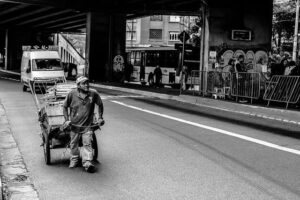The Sistine Chapel: A Timeless Fusion of Art, Faith, and Tradition
Foundations and Architectural Transformation of the Sistine Chapel
Initiated under the patronage of Pope Sixtus IV in 1473, the Sistine Chapel was conceived as a private papal sanctuary, embodying the Renaissance spirit and ecclesiastical authority. Its design draws inspiration from Early Christian basilicas, featuring a rectangular layout topped with a modest vaulted ceiling. The interior walls are segmented by pilasters and expansive lunettes, which later became the canvas for an extraordinary series of frescoes that elevated the chapel’s cultural and spiritual stature. This blend of practical design and understated elegance allowed the chapel to maintain its sacred atmosphere while accommodating artistic innovation.
Over the decades, the chapel underwent significant artistic and structural enhancements, including:
- 1477-1480: Renowned artists such as Sandro Botticelli and Domenico Ghirlandaio completed the initial frescoes, enriching the chapel’s narrative depth.
- 1508-1512: Michelangelo’s revolutionary ceiling frescoes redefined the chapel’s interior, introducing a dynamic visual storytelling of biblical themes.
- 1536-1541: The dramatic Last Judgment fresco was added to the altar wall, culminating the chapel’s artistic journey with a powerful theological statement.
These successive layers of artistic achievement not only reflect evolving aesthetic trends but also mirror the chapel’s growing importance as the sacred site for papal ceremonies, including the election of new popes. The architectural and decorative evolution of the Sistine Chapel encapsulates centuries of religious devotion and artistic mastery.
Michelangelo’s Ceiling: A Pinnacle of Renaissance Artistry and Spiritual Expression
Between 1508 and 1512, Michelangelo Buonarroti transformed the Sistine Chapel ceiling into an unparalleled masterpiece of Renaissance art. Commissioned by Pope Julius II, the frescoes narrate key episodes from the Book of Genesis, culminating in the iconic depiction of The Creation of Adam. Michelangelo’s innovative use of foreshortening, anatomical precision, and complex composition imbues the chapel with a profound spiritual resonance and artistic vitality, establishing it as a cornerstone of High Renaissance achievement.
- Technical Innovation: Michelangelo’s mastery of human anatomy and perspective revolutionized fresco painting techniques.
- Theological Symbolism: Each panel conveys layered biblical meanings, inviting viewers into a rich, contemplative experience.
- Conservation Milestones: The extensive 20th-century restoration unveiled the original vibrant palette, reigniting global admiration for Michelangelo’s genius.
| Dimension | Significance | Ongoing Influence |
|---|---|---|
| Artistic Technique | Introduced dynamic anatomical realism | Inspired contemporary figurative art and realism |
| Thematic Complexity | Unified biblical narratives into a cohesive visual story | Set a precedent for religious and secular storytelling in art |
| Cultural Impact | Emblematic of Renaissance humanism and creativity | Draws millions of visitors and pilgrims annually |
The Sistine Chapel’s Integral Role in Papal Conclaves: Tradition and Secrecy
For more than 600 years, the Sistine Chapel has been the sacred arena for the election of popes, blending solemn religious tradition with an atmosphere of profound secrecy. Within its fresco-adorned walls, the College of Cardinals convenes in strict isolation to elect the leader of the Catholic Church. This ritual, steeped in centuries-old customs, has witnessed the rise of pontiffs who have profoundly influenced global Catholicism and world history.
Key features that define the conclave’s unique environment include:
- Seclusion and Security: The chapel is hermetically sealed during conclaves to guarantee confidentiality and prevent external interference.
- Symbolic Ceremonies: Rituals such as the burning of ballots and the emission of colored smoke signals communicate the conclave’s progress to the outside world.
- Inspirational Setting: The biblical frescoes serve as a spiritual backdrop, reminding electors of their sacred responsibilities and the weight of their decisions.
| Era | Significant Conclave Milestone | Typical Duration |
|---|---|---|
| 15th Century | First formal papal conclave held (1431) | Approximately 7 days |
| 16th Century | Adoption of the secret ballot system | Up to 10 days |
| 20th Century | Modernization of voting procedures (1978) | Typically 2 days |
Throughout its history, the Sistine Chapel has symbolized the continuity and solemnity of papal elections, adapting to the evolving needs of the Church while preserving its sacred traditions. It remains a powerful emblem of the Catholic Church’s spiritual leadership and resilience.
Conservation Challenges and Strategies for Protecting the Sistine Chapel’s Masterpieces
Safeguarding the Sistine Chapel’s priceless frescoes is an ongoing challenge, complicated by the fragility of 16th-century pigments and the constant flow of millions of visitors each year. Environmental factors such as temperature and humidity fluctuations, along with elevated carbon dioxide levels, accelerate the deterioration of the artwork. Additionally, exposure to both natural and artificial light contributes to pigment fading, necessitating vigilant preservation efforts. Balancing public access with conservation remains a critical concern for Vatican custodians.
Effective future preservation requires a comprehensive, multi-pronged approach:
- Installation of state-of-the-art climate control systems designed to maintain stable interior conditions without compromising visitor experience.
- Utilization of advanced, non-invasive imaging technologies to monitor and detect early signs of fresco degradation.
- Implementation of stricter visitor management policies to control crowd size and reduce airborne pollutants.
- Strengthening international collaboration among conservation specialists to exchange knowledge and refine restoration techniques.
| Preservation Focus | Current Challenge | Proposed Solution |
|---|---|---|
| Humidity Regulation | Variable moisture levels causing paint layer cracking | Automated HVAC systems with precision humidity sensors |
| Light Exposure | UV radiation leading to pigment fading | Installation of UV-filtered lighting and controlled illumination schedules |
| Visitor Impact | CO₂ accumulation and physical wear from crowds | Controlled entry protocols and limited group sizes |
Conclusion: The Enduring Significance of the Sistine Chapel
The Sistine Chapel stands as a monumental achievement in both religious heritage and artistic innovation. Beyond its role as a sacred site for papal conclaves, it continues to captivate millions worldwide with its unparalleled frescoes and profound spiritual symbolism. As a living testament to the intersection of faith, art, and tradition, the chapel’s legacy endures—inviting future generations to appreciate its historical depth and cultural richness. Its preservation remains paramount to maintaining this irreplaceable symbol of humanity’s spiritual and creative aspirations.













